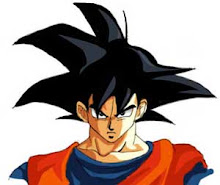
"Movements produced on a person by an external force (i.e. no voluntary muscle contractions by patient) provided either by a person or a machine (CPM)"
Sub-divided into:
- Physiological passive movements (mobilisations)
- Accessory movements (mobilisations) - Glides,Rolls,Distractions,Compressions,Rotations (cannot be performed actively)
- Passive stretching (mobilisations)
- Adverse Neural Tensioning (ANT)
- Manipulations
Structures Involved:
- INTRA-ARTICULAR: subchondral bone; articular cartilage, synovial fluid, synovial membrane, menisci and fat pads
- PERI-ARTICULAR: joint capsule, supporting ligaments, tendons, muscles, fascia, skin, blood & lymphatic vessels, nerves
Normal Restrictions to Joint ROM:
- Joint capsule
- Ligaments
- Muscles & their tendonous attachements (active/passive insufficiency)
- Bone/cartilage approximation i.e. shape and joint surface (loose packed,closed packed)
Abnormal Restrictions to Joint ROM:
- Increased synovial fluid volume/pressure
- Muscle imbalance
- Mal-tracking
- Trauma
- Abnormal physiological changes in connective tissue due to immobilisation
- Decrease in water in tissue matrix = abnormal points of collagen cross-linking - 'adhesions'
- Atrophy of ligaments
- Tendons degrade
- Muscle contractures
- Nerve tensioning
- Synovial tissue atrophy
- Pain/guarding mechanism (muscle spasm)
Beneficial Physiological Effects:
- Maintains ROM/Increases ROM
- Cartiliage healing/nutrition (hydrokinetic transport)
- Smearing of synovial fluid reducing friction
- Appropriate alignment
- Increases lymphatic drainage/helps reduce oedema
Indications
- Assessment of passive ROM
- Diagnostic testing
- Maintaining joint ROM in a paralysed or unconscious patient
- Reducing joint pain
- Reducing muscle spasm / guarding
- Restoration of range (correction of 'mal-tracking and/or passive stretching)
- Facilitates healing process
Limitations
- CANNOT CHANGE DISEASE PROCESS
- WILL NOT prevent muscle atrophy
- WILL NOT increase strength or endurance
Contractions
- Excessive pain
- Joints adjacent to unstable fractures
- DVT in area
- Infection
- Active inflammatory (R.A)
Range of Motion
- Direction of movement will depend on the desired efffect
- Amplitude of the passive movement can be graded to indicate where in the available range the technique is being performed
- Helpful in matching the induced range of P.M. to the desired mobilising effect depending on the irritiability of the lesioned structure
Maitland Grading Scale
- 1 - SMALL amplitude movement performed at the beginning of range (within resistance free zone)
- 2 - LARGE amplitude movement performed within a resistance free part of the range
- 3 - LARGE amplitude movement performed into resistance or up to the limit of resistance
- 4 - SMALL amplitude movement performed into resistance or up to the limit of resistance
- 5 - High velocity, short amplitude thrust often near or at the limit of abnormal movement, at speed outside of patient's control

Another benefit is that passive movements act as a 'TRANS-SYNOVIAL PUMP' - increasing fluid movement in and out of a joint (clearance rate)
ReplyDelete